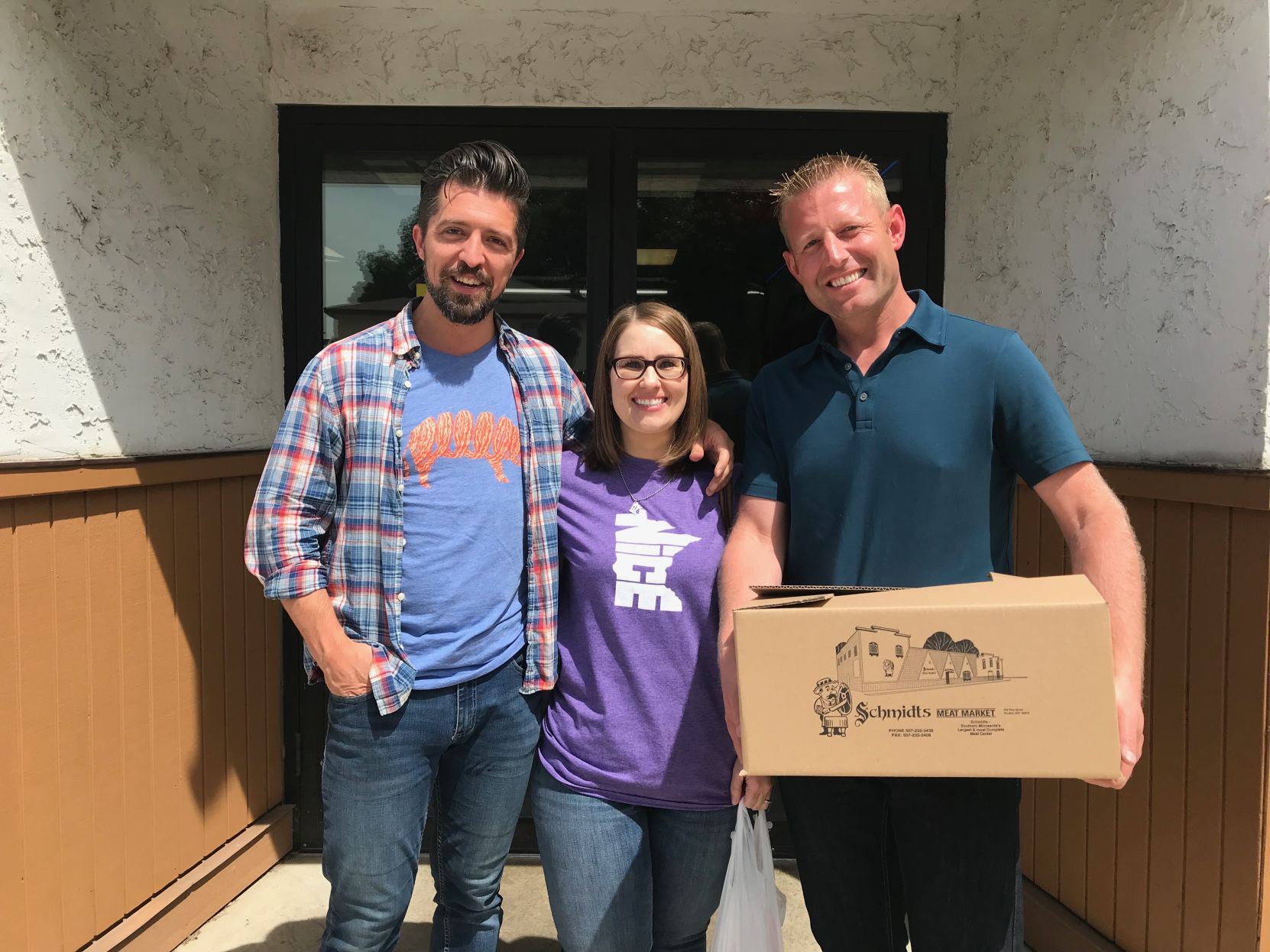Minnesota hog farmer Tim Schwartz had never been filmed before. He’d also never been a part of a documentary. But what Schwartz does know is raising pigs.
Located near Sleepy Eye, Minnesota, Schwartz Farms is a farrow-to-finish operation, farrowing out 60,000 sows a year. Started in 1978 by Tim’s dad Joe and his uncle John; it began as a corn and soybean farm. Later they got into livestock—adding cattle and pigs over the years.
“We’re a family owned company,” Schwartz said. “Eventually it grew a little more into the hog side.”
The Schwartzes have worked to get the good word out about hog farming in Minnesota, and are part of the 3,000 pig farms in the state. Minnesota ranks second in the United States with 16.4 million pigs marketed in 2017.
During October, the Minnesota Pork Board worked to promote its “Meat of the North” documentary. The goal of the documentary is to help consumers connect with where their food comes from. Schwartz was asked to represent the producer side of the industry in the film.
“My part of it was to be the expert in pig production and to be the voice of pig farmers,” Schwartz said. “I was happy to help them out on it.”
The film connected a social media type person with a pork enthusiast and a pork producer.
“We took them and showed them how they’re raised and how production works,” Schwartz said. “Then we also did the meat market visit, kind of explaining all the different cuts of pork and then as well as the cooking side of it.”
Schwartz thought the two people who accompanied him—Jeromy and Kat—had an opportunity learn about an industry they aren’t very familiar with. Jeromy Darling is Twin Cities pork enthusiast and Kat Peterson is Twin Cities food influencer with an Instagram following.
“I think for them it was the opportunity to be able to ask questions and try to truly understand how things go on the farm to be able to see it first hand,” he said. “To be able to hold a pig up and understand all the work that goes into raising pigs and how you do it and the manner in which you do it.”
He was happy to be able to show them all the tasks they do on his farm every day.
“I think that is probably the biggest thing that those two walked away with.” Schwartz said. “Just an understanding of how production works.”
Along the way the trio was able to discuss topics like antibiotics and hormone use in pigs.
“So, kind of trying to understand—maybe some things they’ve heard, seen in social media or other places that aren’t exactly factual or accurate,” he said. “And then to be able to go somewhere and say does this really happen and understanding the answer behind it.”
For Schwartz, his biggest take away from being involved with the documentary and meeting the others featured in the film, is to be able to tell his farm’s story.
“Folks want to know, consumers want to know—to understand how you do things and why you do it in the way in which you do it,” he said. “So for us to open up our doors to be more transparent to show people what we’re doing. Because lots of time when you explain the reasons why you do what you do, they understand.”
Schwartz thinks pig producers need to work harder at explaining their process so consumers know where and how their meat is produced. He believes there’s been a much progress in the past 50 years.
“We’re so much more sustainable,” Schwartz said. “Pig farmers use about 41 percent less water, 78 percent less land and have lowered their carbon foot print by 35 percent. There’s a number of reasons why that’s happened.”
Sign up for HPJ Insights
Our weekly newsletter delivers the latest news straight to your inbox including breaking news, our exclusive columns and much more.
One big reason is animals used to be raised outdoors, and Schwartz believes its not only part of sustainability, but also animal welfare. In Minnesota wintertime temperatures can get to minus 20 or minus 30 degrees F.
“Look at things that we had to deal with 50 years ago, like sunburn in the summer time for pigs, or frost bite in the winter time,” he said. “Sometimes people don’t think about those things when it comes to pig farming.”
When Schwartz talks with people who have never raised a pig before, he tries to reiterate a couple of themes.
“The reason animals came indoors was so that we could do a better job with water. We could do a better job with feed and feed efficiency, less land and all these things—whether it’s health or welfare, well-being—all those things we try to do every day,” Schwartz said. “We continue to work harder to get that job done.”
Pig farmers, like a lot of livestock producers are facing trying times. Especially now with challenges when it comes to exports.
“Exports are huge,” Schwartz said. “We produce about a quarter of the production in the U.S. gets shipped overseas, so exports, and maintaining exports is very important.”
The industry is growing, and maintaining and expanding export opportunities is important to pork farmers in order to be able to get value out of their operations. And now, an outbreak of African swine fever is posing even more challenges.
“So just like with PED a few years back, we’re doing everything we can for biosecurity standpoint to ensure that the ingredients that we get from overseas, the imports of other products and all the things you think about when you think about biosecurity,” Schwartz said. “We’re trying to make sure that all the safeguards are in place to protect our livelihood and what it takes to raise a pig.”
View the Meat of the North documentary at www.mnpork.com/meat-of-the-north or below.
Kylene Scott can be reached at 620-227-1804 or [email protected].


